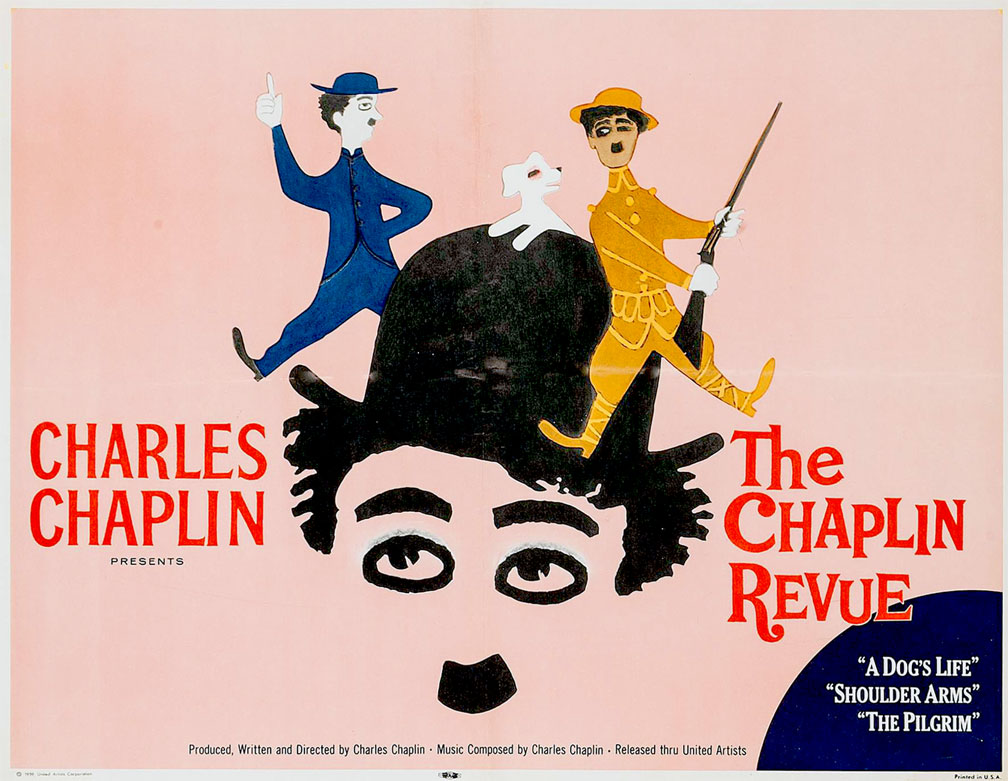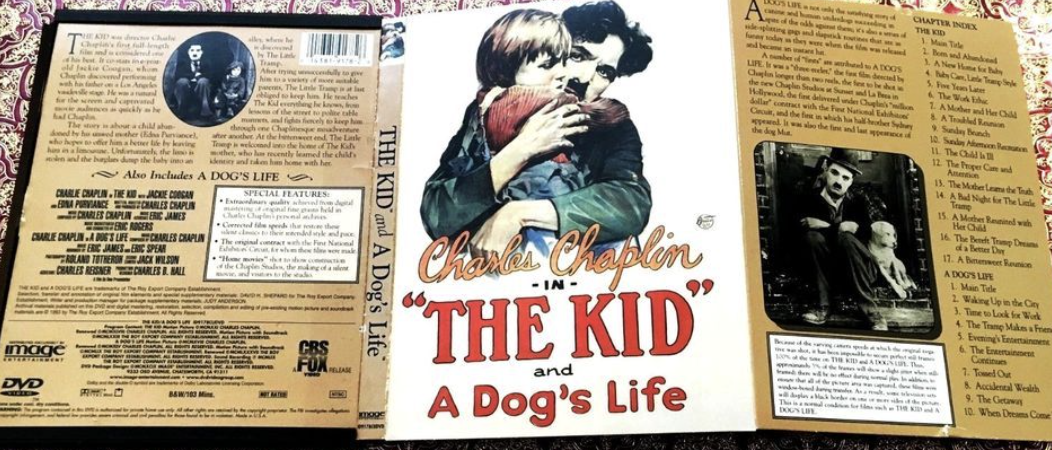At some point when I was in college or somewhere in my 20s, I saw “The Chaplin Revue” at the Carnegie Hall Cinema, also known as the Little Carnegie. Lee Erwin accompanied the film on the theater’s Wurlitzer organ, and that was the main reason I’d attended the show. Something about the film, one scene in particular, stuck with me for years.
Charlie Chaplin released The Chaplin Revue in 1959. This was two years after the release of A King in New York and seven after Limelight. The “Revue” was comprised of three Chaplin silent comedy shorts: A Dog’s Life, Shoulder Arms and The Pilgrim. They had new musical scores by Chaplin, and The Pilgrim even had a western/cowboy song “I’m Bound For Texas”, written by Chaplin, as part of its sound-track, sung by Matt Monro.
(You may know Monro’s name and voice from hits he had in the 1960s like “Born Free” or “From Russia With Love”.)
The Chaplin Revue was released around the time that silent film’s first renaissance was really taking off and people were being exposed to silents again. The following 2-3 years saw the releases of Robert Youngson’s When Comedy Was King and Days of Thrills and Laughter, as well as the broadcast of the Killiam Shows TV series “Silents, Please!”.
The singing cowboy song wasn’t the only thing in The Chaplin Revue that was trying to appeal or cater to an audience of the time. There was something else, something omnipresent throughout the film: the three Chaplin shorts were step-printed.
Step-printing or stretch-printing is a process done with an optical printer to adjust the viewing speed of a film. By printing every other frame twice, or every third frame, a film could be made to appear to be running slower than 24 frames per second.
Chaplin wasn’t the only silent film star concerned that their “olde tyme” silent flickers would get laughed at for the wrong reason or seen as silly or maudlin. Harold Lloyd removed scenes from some of his films in preparing his compilation reissues, like the moment when he breaks down and cries during the party scene of The Freshman. Mary Pickford had planned to destroy all her films in the 1930s, but fortunately Lillian Gish talked her out of it.
Bob Birchard told me that Johnny Hines attended a Cinecon convention in the 1960s where they were presenting one of his films, and insisted they run it at “silent speed” (16 or 18 fps). The film just kind of sat there, and wasn’t doing well, and at some point they switched the projectors over to “sound speed”, which either was or was close to the speed Hines’ film would have been shown at in its original release — and the film came to life and the laughs kicked in, and for the right reason. But there was that worry on Hines’ part.

This concern about showing silent movies at a slower frame rate to a 1950s or 1960s audience brings me to The Chaplin Revue, and its step-printing. The films were reproduced with every other frame repeated, replicating the look of their being presented at 16 frames per second, at which the movement of the performers was at or close to “natural speed”. (I will discuss this somewhat subjective idea of “natural movement” in a later post.)
What I noticed about the speed at that screening was not only that the films seemed slow and minus the usual “snap” or energy, but there was something else. The Charlie I saw in the films, especially in the sequence in the employment office in A Dog’s Life, was not the Charlie I knew and loved. There was something that was slightly off, or missing, in this slowed-to-natural-speed edition of the film. And this is what stayed with me for years, and led to what I wound up discovering about the speed-up of Silent Film.
The first post in this series is here.
The previous post (#43) to this one is here.
I don’t recall ever seeing those three films other than in ‘The Chaplin Revue.’ I mean I don’t think I’ve seen them as they were originally released before being abused by step-print (which is not nearly as abusive as the recently ‘colorized’ Chaplins! I thank the Gods of Silent Cinema that “The Gold Rush” is available without Charlie’s narration.
I seek to find the ‘Revue’ films restored and remastered on DVD with a newly-recorded score arranged and conducted by Carl Davis — or maybe original piano or organ accompaniment by Ben Model (but please don’t include the Matt Monro song).
Really enjoyed this blog. I have great memories of attending several silent comedy showings in NYC with Lee Irwin at the organ.
Tom – if you can find the Laserdisc or OOP dvd of “The Kid” that David Shepard put together 20-25 years ago, it also has “A Dog’s Life” on it, sourced from a non-step-printed 35mm. It was released by Image, and looks like this:
